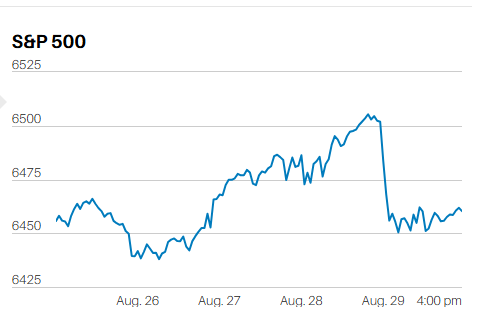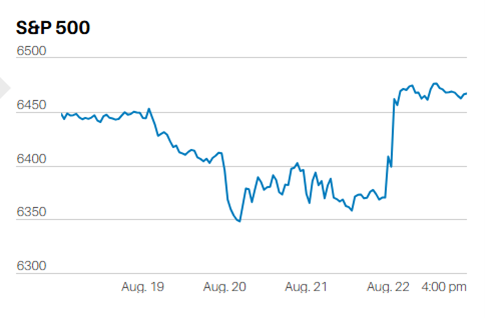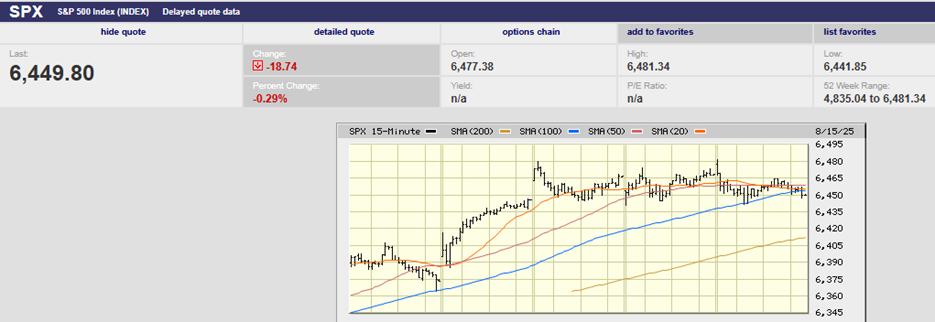Continue to contribute, cheaper is better

Market Update
The S&P 500 finished down 0.2% to close at 4123.34 last week. The index spent the first three days moving higher only to give it all back on Thursday and Friday. The S&P set a new low for the year at 4062.51 on Monday, down 15.7% from its January 4th high of 4818.62. The Nasdaq has lost over 20% and is in a bear market.
The coming week is critical for the S&P 500’s near-term direction. A failure to regain the trading range this week could lead to a sharp move lower. Big round numbers such as 4,000 can provide support, but there is no guarantee. Likewise, the trading channel bottom is currently at 3850. It may provide support. The S&P 500 is likely to run back to the top of the trading range if it can recover the old trading range this week. There were two small hints that the stock market may rally in the coming week. The S&P 500 didn’t breach its Monday low on Thursday. The index also rallied almost 1.5% in the last hour of trading Friday, which is when the smart money tends to dominate.
Regardless, there is a high degree of uncertainty among investors. The uncertainty is translating into volatility. Wednesday the S&P 500 was up 3%. Its range for the day was 3.8%. Thursday it fell 3.6%. The Nasdaq fell 5% Friday. Investors want to believe that the Federal Reserve can engineer a soft landing. Yet it has only managed that feat three times in 11 tightening cycles since 1965. The other eight times have resulted in recessions.
The economy is slowing, but consumers have money to spend. Inflation may have peaked but that is far from certain. The cost of money is rising. The 10-year Treasury is yielding 3.14% up from 1.5% at the start of the year. The 10-year hasn’t exceeded a 3% yield since 2018. The two-year Treasury, which is most influenced by the Fed funds rate, is yielding 2.78%. Higher rates will slow the economy further in the coming quarters.
Yet the labor market is strong. There are 11.5 million job openings nationwide and fewer than 6 million unemployed. And interest rates will be self-correcting at some point. The economy is laden with debt. High rates will make servicing that debt more difficult. Corporations and consumers will have more difficulty accessing new debt as well. Debt will weigh down the economy, pushing it into a recession if interest rates don’t fall soon enough.
Norwood Economics is less confident about its prediction of no bear market in 2022. The odds are rising. A bear market and recession in 2023 is a coin toss at this point in our opinion. There are already red flags. Housing and consumer discretionary stocks are falling. The iShares Consumer Discretionary ETF (IYC) peaked in November 2021. It has fallen 26% since then. The iShares U.S. Home Construction ETF ((ITB) peaked in December 2021 and is down 28%. FedEx and UPS are canaries in the economic coal mine. They are both signaling a slowing U.S. economy. FDX peaked in May of last year and is down 34% since. UPS peaked in early February of 2022 and is down 22% since. Norwood Economics’ base case is still for slow growth and no bear market in 2022. It’s a much closer call though.
Economic Indicators
The jobs report was the big number last week. Nonfarm payrolls grew by 428,000 in April, the same as the prior month. The strong jobs growth number indicates strength in the economy. The unemployment rate is unchanged at 3.6%. Job growth was widespread, according to the U.S. Bureau of Labor Statistics (BLS). The labor force participation rate was 62.2%. The employment-population ratio was 60.0%. Both numbers were little changed since last month, according to the BLS. Both numbers were 1.2% below their February 2020 values.
Unfortunately, unit labor costs are rising, and productivity is falling. Nonfarm business sector labor productivity decreased 7.5% in the first quarter. It is the largest decline in quarterly productivity since the third quarter of 1947. Unit labor costs in the nonfarm business sector increased 11.6% in the first quarter. Unit labor costs increased 7.2% over the last four quarters. It is the largest four-quarter increase since an 8.2% increase in the third quarter of 1982.
Declining productivity and rising unit labor costs will negatively impact corporate profits. It will also stoke wage inflation. Wage push inflation is difficult to eradicate once begun. The Fed knows it. Expect the Fed to continue to emphasize monetary tightening. The falling stock market is a secondary concern at best right now.
Investing for the long run
I’ve had a couple of 401(k) plan participants call to discuss their accounts in the last week or two. They’ve both asked basically the same question. One asked if he should move to a more conservative portfolio because of stock market losses, even go to cash. The other asked if he should stop contributing to his 401(k) because the stock market is falling. Both questions are market timing questions. In essence, they are projecting further losses for the stock market. They would not have asked me their questions if they thought the stock market would rise soon.
The first 401(k) plan participant is 68 and still working. He plans on working as long as he can because of inadequate savings. He is already in the Fidelity Freedom Income fund. It is the most conservative of Fidelity’s target-date funds. Unfortunately, both stocks and bonds are getting hammered in 2022. The S&P 500 is down 14.4% from its January 4th high. The U.S. Aggregate Bond Index is down a bit more than 10% year-to-date. Consequently, the Fidelity Freedom Income fund is down 10.85% YTD. It’s been a rough year, no doubt.
However, it is possible the rest of the year will be better. Interest rates may be about done rising. We could see some recovery of bond prices into year-end. Stocks as well maybe at or close to a bottom for the year. Selling now could turn out to be the classic mistake of selling near the bottom. The 401(k) participant is planning on working well into his 70s. He will not have to take his required minimum distribution at 72 if he is still working. His best bet is to keep contributing and to maintain his current allocation.
The second 401(k) participant is much younger. He didn’t see the point of deferring money into his 401(k) account only to lose it. His assumption is that markets will continue to fall. We had the market timing discussion. I pointed out that he can’t know if losses will continue, or for how long. I also pointed out that dollar-cost averaging does work. Buying on the way down means buying more cheaply, which is always a good thing. A successful retirement requires saving enough and staying diversified. Reacting to the short-term ups and downs of the markets is rarely a winning strategy.
401(k) plan participants should keep saving at least 15% of their income. Their investment allocation should remain appropriate for their time horizon and financial plan. They should not be trying to outguess Mr. Market.
Regards,
Christopher R Norwood, CFA
Chief Market Strategist











